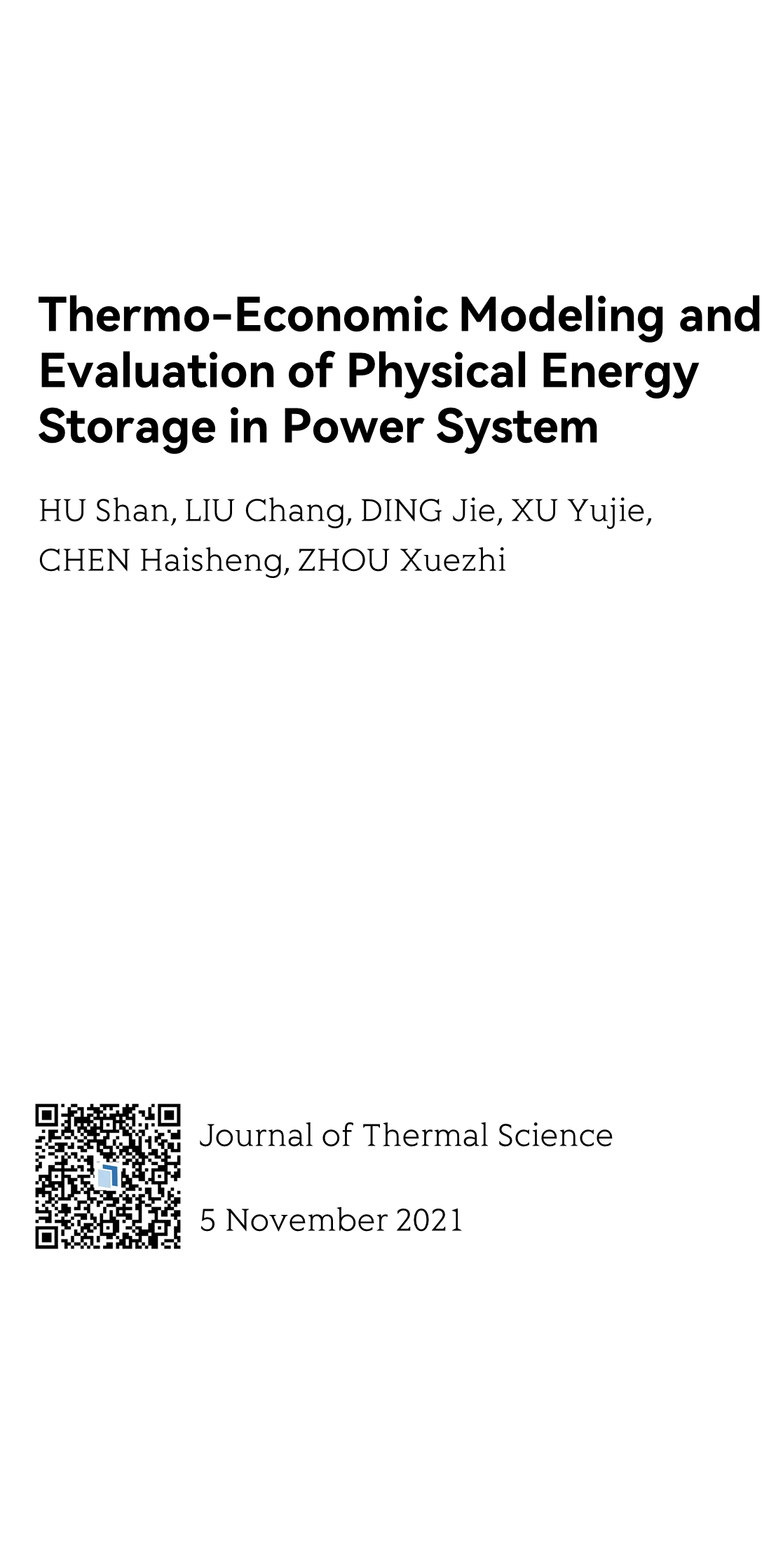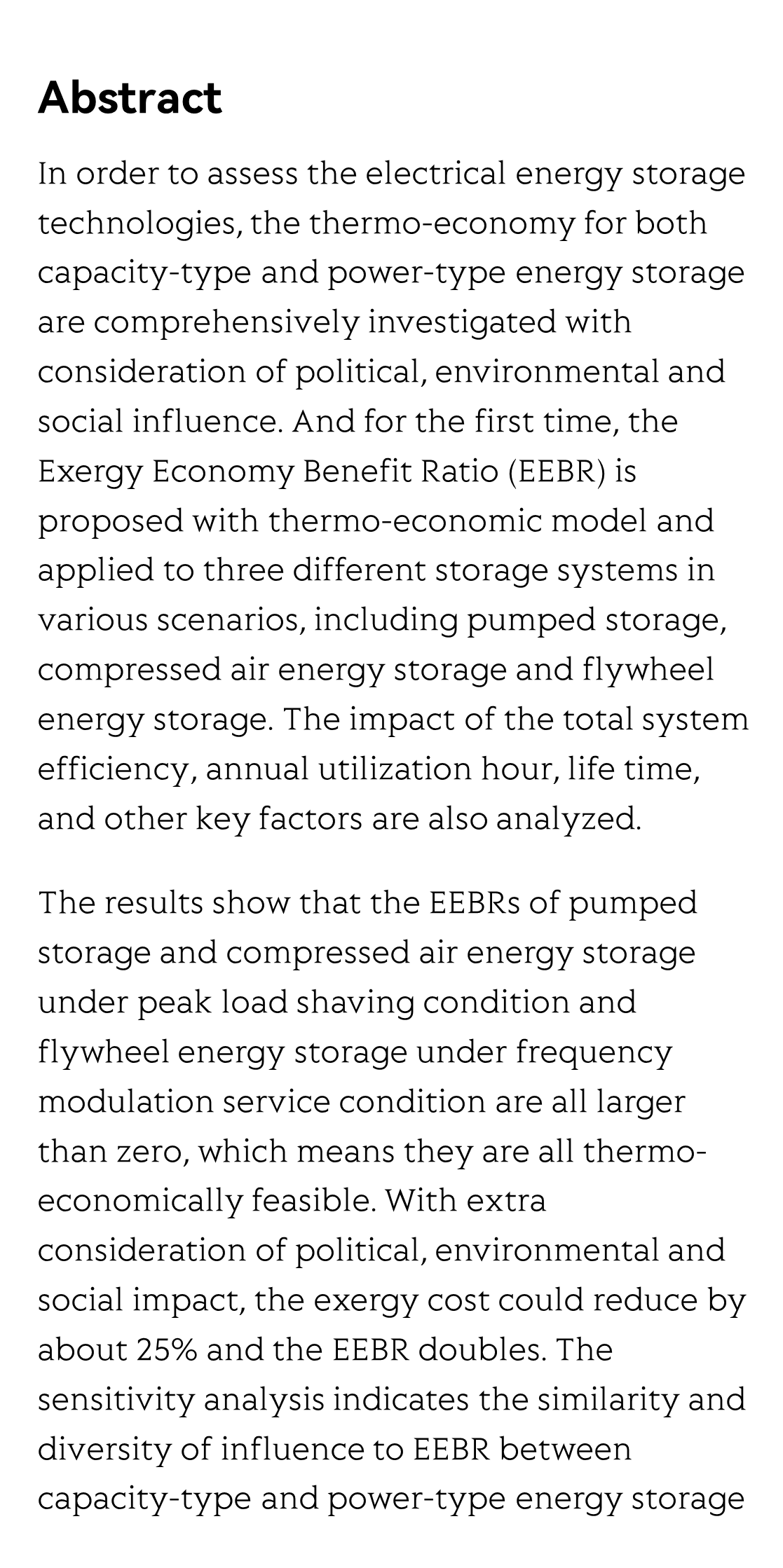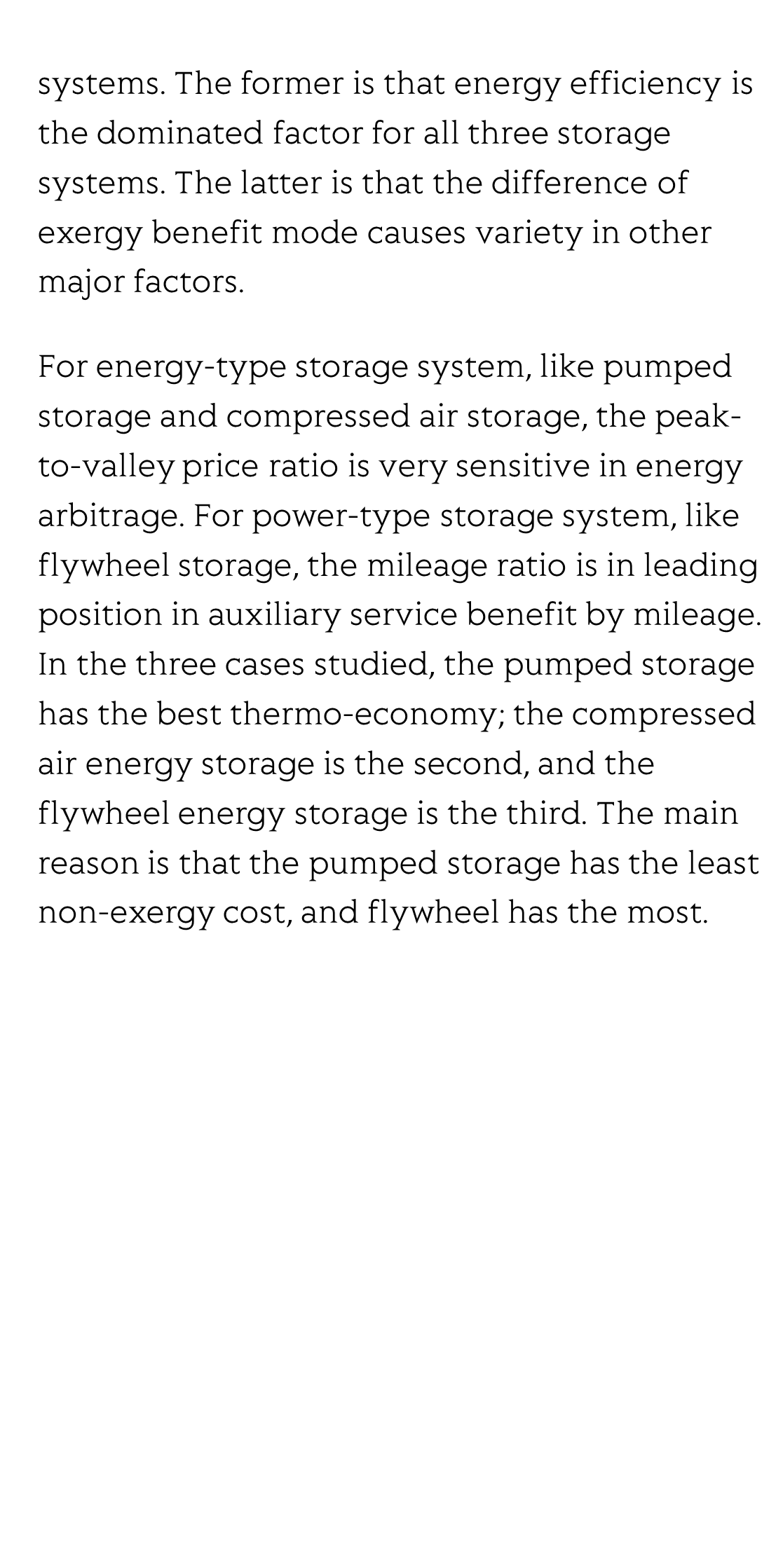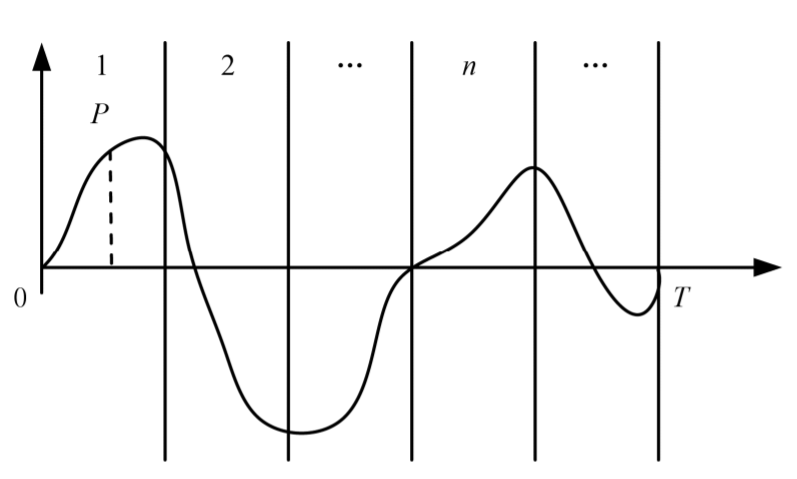(Peer-Reviewed) Thermo-Economic Modeling and Evaluation of Physical Energy Storage in Power System
HU Shan 胡珊 ¹, LIU Chang 刘畅 ¹, DING Jie 丁捷 ¹ ², XU Yujie 徐玉杰 ¹ ², CHEN Haisheng 陈海生 ¹ ² ³, ZHOU Xuezhi 周学志 ³
¹ Institute of Engineering Thermophysics, Chinese Academy of Science, Beijing 100190, China
中国 北京 中国科学院工程热物理研究所
² University of Chinese Academy of Sciences, Beijing 100049, China
中国 北京 中国科学院大学
³ National Energy Large Scale Physical Energy Storage Technologies R&D Center, Bijie 551712, China
中国 毕节 国家能源大规模物理储能技术研发中心
Abstract
In order to assess the electrical energy storage technologies, the thermo-economy for both capacity-type and power-type energy storage are comprehensively investigated with consideration of political, environmental and social influence. And for the first time, the Exergy Economy Benefit Ratio (EEBR) is proposed with thermo-economic model and applied to three different storage systems in various scenarios, including pumped storage, compressed air energy storage and flywheel energy storage. The impact of the total system efficiency, annual utilization hour, life time, and other key factors are also analyzed.
The results show that the EEBRs of pumped storage and compressed air energy storage under peak load shaving condition and flywheel energy storage under frequency modulation service condition are all larger than zero, which means they are all thermo-economically feasible. With extra consideration of political, environmental and social impact, the exergy cost could reduce by about 25% and the EEBR doubles. The sensitivity analysis indicates the similarity and diversity of influence to EEBR between capacity-type and power-type energy storage systems. The former is that energy efficiency is the dominated factor for all three storage systems. The latter is that the difference of exergy benefit mode causes variety in other major factors.
For energy-type storage system, like pumped storage and compressed air storage, the peak-to-valley price ratio is very sensitive in energy arbitrage. For power-type storage system, like flywheel storage, the mileage ratio is in leading position in auxiliary service benefit by mileage. In the three cases studied, the pumped storage has the best thermo-economy; the compressed air energy storage is the second, and the flywheel energy storage is the third. The main reason is that the pumped storage has the least non-exergy cost, and flywheel has the most.
Flicker minimization in power-saving displays enabled by measurement of difference in flexoelectric coefficients and displacement-current in positive dielectric anisotropy liquid crystals
Junho Jung, HaYoung Jung, GyuRi Choi, HanByeol Park, Sun-Mi Park, Ki-Sun Kwon, Heui-Seok Jin, Dong-Jin Lee, Hoon Jeong, JeongKi Park, Byeong Koo Kim, Seung Hee Lee, MinSu Kim
Opto-Electronic Advances
2025-09-25
Dual-frequency angular-multiplexed fringe projection profilometry with deep learning: breaking hardware limits for ultra-high-speed 3D imaging
Wenwu Chen, Yifan Liu, Shijie Feng, Wei Yin, Jiaming Qian, Yixuan Li, Hang Zhang, Maciej Trusiak, Malgorzata Kujawinska, Qian Chen, Chao Zuo
Opto-Electronic Advances
2025-09-25







